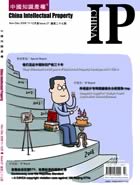
Under Article 2(1) of the Rules for the Implementation of the Patent Law (hereinafter “Rules”), what is sought to be protected by patent must be a new technical solution relating to a product, a process, or their improvements so as to constitute a patentable subject matter, thus satisfying patentability requirements. So must business methods.
Business methods, standing alone, such as “a method for mixing stocks,” or apparently natural rules or principles of mental activities, do not constitute technical solutions and are not patentable subject matter, which is undisputed in practice. Business methods involved in e-commerce, however, may cause some uncertainty as to whether they are technical or non-technical solutions.
To minimize the uncertainty, an applicant is advised to have an accurate understanding of the methods that an examiner employs in examining the patentability of business methods so as to target the application documents and Office Action response accordingly.
An examiner, in conducting such examinations, will generally adopt the following two methods in light of different situations:
1. Rejecting the application under Article 2(1) of the Rules for lacking a technical solution, and is therefore not a patentable subject matter, if it can be determined on the basis of the written description and/or common knowledge that the application seeks a solution other than a technical one.
For example, an application for an invention patent applies for protection of “a method and system of the management of tourist items.” According to the descriptions in the specification, in the prior art, the solution to reduce the time spent by tourists in queuing outside a tourist site is to issue a card to each tourist. Then, the tourist visits the computer terminal at the amusement park by using this card, selecting in advance the time for visiting a particular site. The disadvantage of this method is that once a visiting time for a particular amusement site is chosen by a tourist, no other tourists can visit that site at that time. Further, there is a lack of dynamic synchronization between the actual visiting time and the data within the computer. As a result, at a given time, some tourist items may not be used while others can only be visited by waiting in line. The problem that the invention intends to solve is to adjust the tourist flow in a dynamic manner so as to save tourists their waiting time. This belongs to non-technical problems, and thus fails to constitute a technical solution as defined in the foregoing provision and is not a patentable subject matter.
2. Rejecting the application under the same Rule for lacking patentable subject matter on the basis of prior arts that have objectively solved the problems asserted in the written description, which presumptively points to a non-technical solution.
For example, an application for an invention patent seeks to protect “An Imaging Business Method.” The specification describes the conventional technology as cumbersome for selling photos by reprinting the photo in a photoshop, and then sending the photos to a purchaser by mail. The claimed invention digitalized the pictures to be sold by utilizing computers and then transmitted them via the network, and finally printed them out via printers, which solved the technical problem of combining the traditional commerce activities with computer network technology. In relation to this technical problem, the examiner conducted a prior art search. Through the search, the examiner found a prior art document, which disclosed a system of selling digital audio-visual products via computers and networks. This means that the technical problem of transmitting pictures and displaying them to purchasers by making use of computers and networks has been solved. The only distinction between the claimed invention and the prior art is the selling of different products. Therefore, the problem that the claimed invention was designed to solve was a non-technical problem. The invention failed to qualify as a technical solution as defined in the foregoing provision and thus was not a patentable subject matter.
It is thus shown that the methods that Chinese patent examiners adopt in examining the patentability of an application for an invention patent involving business methods differ from both the “useful, concrete, tangible” criterion adopted by the U.S. and the “machine or transformation” test reasserted in the Bilski case( see the article in IP international of this issue). This is particularly worth the attention of foreign applicants.
About the author:
Li Deshan is a patent agent from Unitalen Attorneys at Law.
(Translated by Zhang Meichang)
|
Copyright © 2003-2018 China Intellectual Property Magazine,All rights Reserved . www.chinaipmagazine.com 京ICP备09051062号 |
|
|



